After Jeff’s awesome writeup of his LSI SAS 9202-16e performance experiences, I did want to do a quick piece looking under the hood of the LSI 9202-16e. For those that missed it, this is a $200-300 ebay card that LSI supports but has not released. (You can see an ebay search here but be warned they are hard to find.) The big bonus is that if you are using an x16 electrical PCIe slot, this controller can put out more throughput and IOPS than the newer LSI 9207-8i based on the LSI SAS 2308 chipset. One thing mentioned in Jeff’s writeup was the architecture that LSI used to achieve this level of performance from dual LSI SAS 2008 controllers on a single card. Let’s take a look under the hood of this beast of a HBA.
The LSI SAS 9202-16e Connectors
I did want to point out that the connectors on this card are a bit non-standard. The card comes with SFF-8644 connectors. I updated the very old, and in dire need of a revamp, SAS and SATA connector guide with the SFF-8644. Here is a quick look at what the card’s I/O looks like and a cable that plugs into it:
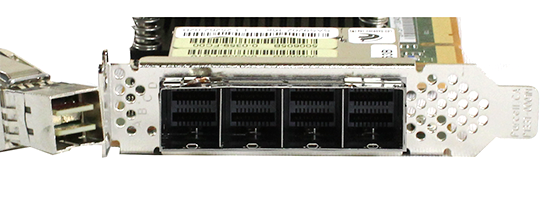
As you can see, there are stacked pieces of PCB in the cables so the cables are a bit harder to manufacture and therefore more expensive. I have been using SFF-8644 to SFF-8088 cables quite successfully with the LSI 9202-16e and did update the quick SAS/ SATA cable guide (that needs an overhaul) with this information.
Under the LSI 9202-16e Heatsink – Architecture Exposed
There is a large heatsink on the LSI 9202-16e which, as it turns out covers more than just two LSI SAS 2008 controllers connected to a PCI Express x16 slot.
Jeff’s LSI 9202-16e piece had a nice architecture diagram that showed a PLX PCI Express switch underneath that giant heatsink.
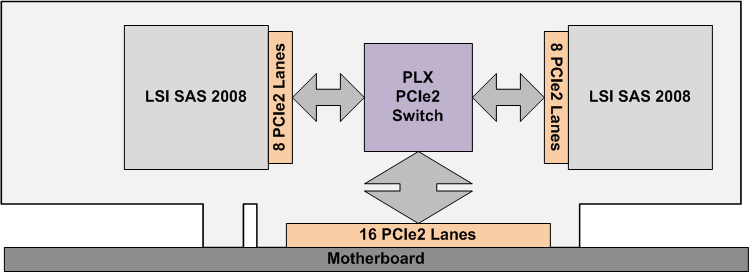
Of course, we wanted to see what was underneath so I decided to open up the LSI heatsink assembly to take a peak.
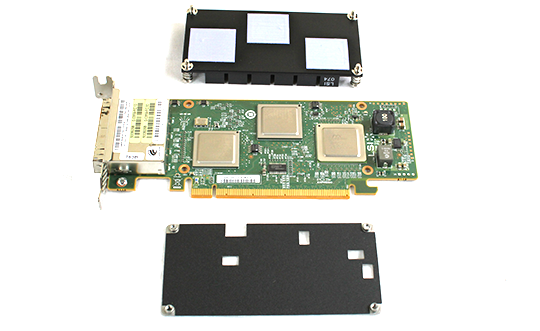
As we can see there are three large chips underneath with thermal transfer pads to get heat to the heatsink. The bottom black piece of metal screws onto the rear and provides a bit more cooling mass and a solid mounting point for that large heatsink. For those wondering, here is how big a standard LSI SAS 2008 heatsink is:

The LSI SAS 9202-16e is clearly packing much more than twice (or three times) that heatsink mass and surface area, and the likely culprit is the third chip, the 32 lane PLX PCI Express 2 switch.
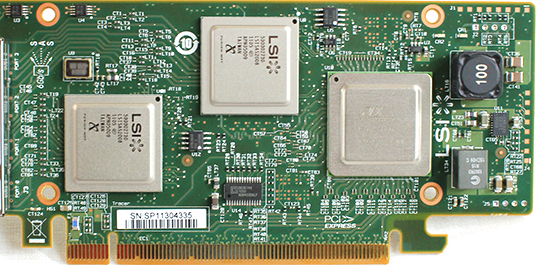
If you have not noticed by now that PEX 8632 PCI Express switch absolutely hates my Canon and I. Nonetheless, we finally figured out how the card is architected. The PCI Express x16 bus from the host to a PLX switch then eight ports from the switch to each of the LSI SAS 2008 controllers. As Jeff noted in the LSI 9202-16e performance piece, this switch seems like it did not have a negative impact on performance but it does add some power requirement. Again, these are rare cards but you can try an ebay search and usually find them for under $300.

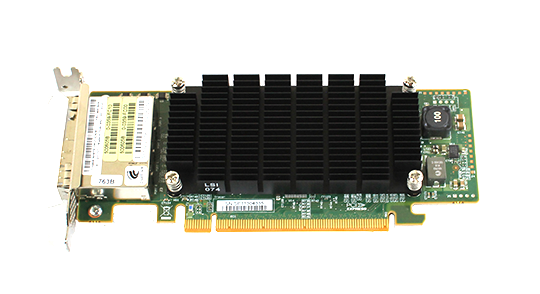


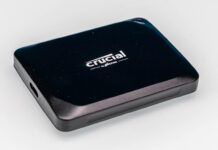
You called the SFF-8644 connectors “non-standard”. They are definitely non-standard when it comes to compatibility with the pile SAS cables most of us currently own, but they are definitely “standard” in the traditional sense – see http://portal.fciconnect.com/portal/page/portal/fciconnect/highspeedio?s=minisashd. Collectively these connectors are known as “Mini-SAS HD” connectors, the “HD” part being the difference between these and the previous generation of connectors, which were “mini” only by comparison with the first generation.
None of this is not news to you, Patrick, but I wanted to clarify for the readers. We should expect to see a slow conversion to this new generation of smaller SAS connectors over time.
Correction: “None of this is news to you….”
Great clarification there. The vast majority of solutions are still using SFF-8088 so wanted to point out that both the connector that is used on this as well as many JBOD/ DAS enclosures and SAS expanders all use a different connector.